I will be there because I am there for the rivers. I am there to speak for the rivers.
Earth Day
Earth Day fell on a sunny Saturday, the first truly warm day of spring in the North Country. Daffodils swayed, kids danced barefoot in the grass, and intrepid paddlers launched canoes on small rivers, while 40 of us sat in a windowless room for a panel presentation. The crowd leaned middle-aged and supportive. To be here, you’d have to have some interest in the environment or progressive politics broadly defined and enough fortitude to forego the fabulous weather. I ducked in late, recognized a few professors from the college down the road, a handful of students eking out extra credit, and a short row of skeptics mid-room, cross-armed in button-up shirts, biding their time.
Blake Lavia and Tzintzun Aguilar-Izzo—collectively “Talking Wings”—took the podium. The two former art students had, for months, been spearheading a quixotic quest to assign legal rights to the Raquette, Oswegatchie, and Grasse Rivers in this corner of upstate New York. Their efforts are part of a global movement; their focus is stubbornly local. In this rural, white, mostly conservative region—the congressional district is represented by outspoken Trumper Elise Stefanik—Talking Wings, as young activist/artists, stand out for their difference, yes, for their contagious positivity, and for their approach: whimsical, colorful, bold, occasionally baffling, and always tenacious. And for their unshakable poise. Both wear black—simple, elegant, respectful—and use “they/them” pronouns.
On Earth Day, Tzintzun opened with a land acknowledgment—they were speaking about and occupying part of the territory of the Haudenosaunee Confederacy—their demeanor warm, their voice slow and measured. They pulled up a slide and began to walk through a shorthand history of the Rights of Nature movement: in 1972, in response to a proposed Disney development in Mineral King, a spectacular alpine valley in the southern Sierra Nevada mountains, lawyer Christopher Stone wrote a novel and ultimately influential article: “Should Trees Have Standing: Toward Legal Rights for Natural Objects.”
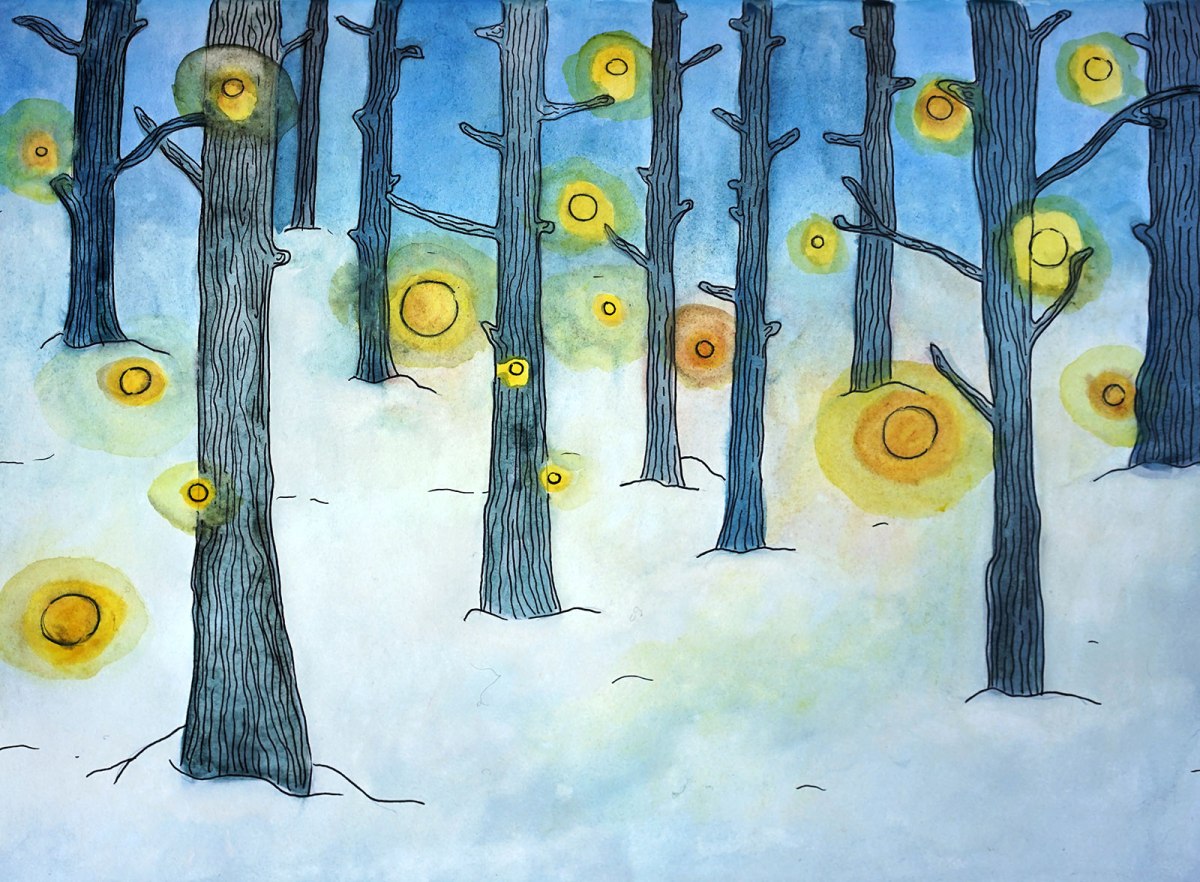
Image by Blake Lavia.
The idea was audacious, nearly preposterous. The development should be stopped, Stone argued, not because it would usurp long-term profits from recreation in an undeveloped area or deny benefits to humans in, say, clean water or air, but because it would irreparably damage the trees. Not trees as lumber, but trees as trees. The Sierra Club picked up the argument, and the case went to the Supreme Court, and though they lost, Justice William O. Douglas dissented—his most famous dissent in a career of famous dissents—writing in part, “That is why these environmental issues should be tendered by the inanimate object itself. Then there will be assurances that all of the forms of life which it represents will stand before the court — the pileated woodpecker as well as the coyote and bear, the lemmings as well as the trout in the streams.”
In the 50 years since, Tzintzun explained, the Rights of Nature movement has gained steam in more than a dozen other countries, and slowly in our own. Ecuador included a sweeping articulation of the philosophy—el buen vivir—in its constitution in 2008. Panama adopted a similar version in 2012. In 2014, New Zealand gave rights to rivers with the indigenous Māori people as guardians. In our own country, the City of Pittsburgh codified the rights of “natural communities and ecosystems,” and the White Earth band of Ojibwe people legally recognized the rights of wild rice or “Manoomin.” Only a few days before this gathering, the Sauk-Suiattle tribes settled a case with the City of Seattle on behalf of endangered salmon to require fish passage to be constructed at three dams on the Skagit River.
The presentation, supplemented by vivid slides of watercolors painted by both Blake and Tzintzun, is one Talking Wings gives frequently to students, to citizens, to lawmakers, to anyone who will listen. Often, they leave the audience with a twofold invitation: support resolutions for the rights of North Country rivers, and share the story of the rivers you love. On Earth Day, they kept things simple: rights of nature make sense.
Blake stepped in to nod to the counterargument: How can we give rights to a nonhuman entity? We do it all the time, they said, with a hint of incredulity. We give rights to states and municipalities, to estates, to infants (who know less than, say, a chimpanzee), and most damningly, if you consider real damage to humans and nonhumans alike, to corporations.
The question is not how can we give rights to nature, but how can we not?
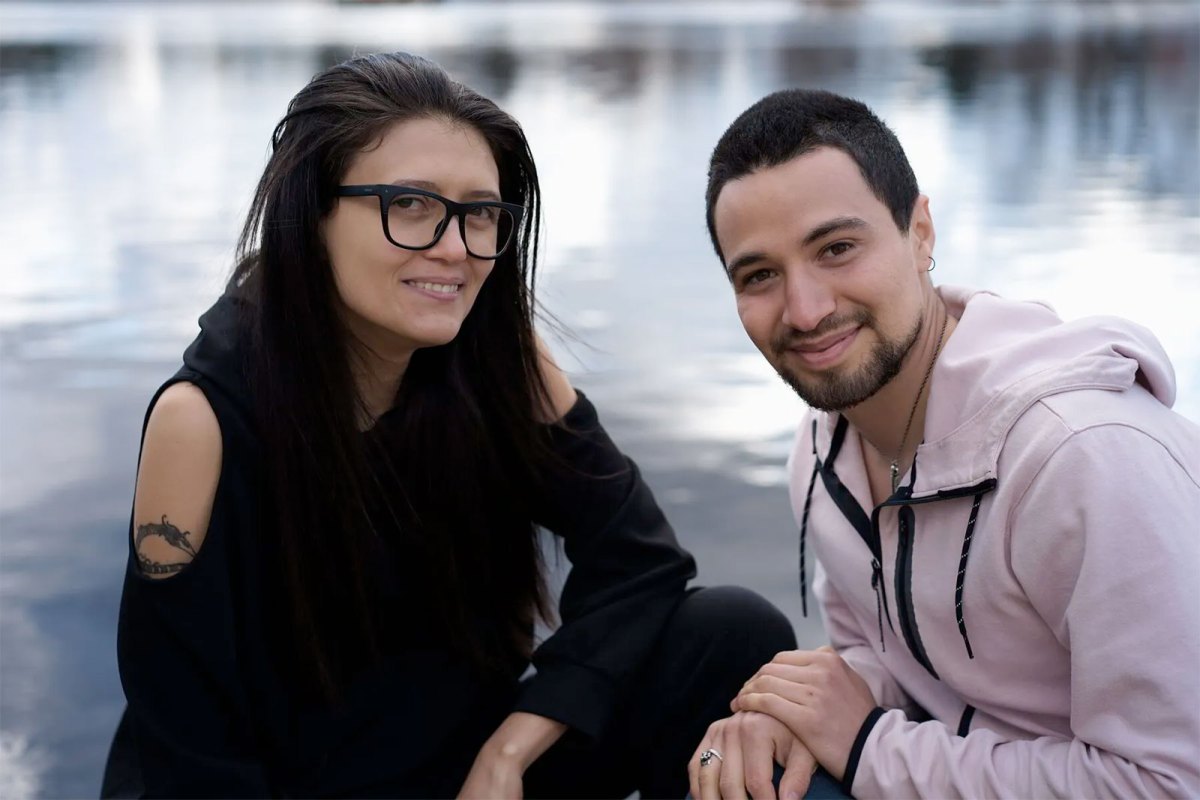
Photo courtesy Talking Rivers.
Queer Ecologies
A year earlier, while doing a short-term gig teaching environmental writing, I’d stumbled upon a headline from The New York Times. Some climate scientists in the wake of the 26th global conference of global warming announced that they might call it quits, go on strike. They’d submitted their 26th report on the dire state of the planet to precious little attention, and in exasperation proposed ending their work. Though other scientists called this move a “supernova of stupid,” the mere consideration had earned them real estate on the front page of the Times.
Curious, I brought the article into class, and asked outright: Should they do it? Should they quit?
Yeah, the students said, the scientists should quit.
Not all the students, mind you. The earnest trudgers, the ones with 4.0 GPAs and legible handwriting, found the quitting troubling (though not baffling, even they understood the researchers’ frustration.) But a solid majority, a ragged alliance of queer students, stoic outsiders, and sleepy-eyed jocks agreed, replied vehemently: Forget science. We all know the science. If things are gonna change, we need another approach.
What approach? I asked.
Art, poetry, stories, they said. Fucking anything.
The next year, in large part as a result of this discussion, I proposed teaching Queer Ecologies, a radically nontraditional course, one poorly suited for the data-driven environmental studies department (or alternatively, one desperately needed) and promptly filled two sections. I didn’t know, really, what I was doing. My interest fell into the broad category of “fucking anything.” The course combined literary theory, wildlife biology, indigenous knowledge, poetry, collaboration, and, well, whimsy. To hold it together, I stole a catch-all phrase from improv: Yes, and… Does science matter? Does art? Yes, and… The material required immersion in waters I’d tiptoed around for years: identities with ever-shifting labels, open disdain for the status quo, any status quo, and impatient fury masking tender uncertainties. If I was going to make this work, as a middle-aged white lesbian, I’d need guest speakers.
Enter Talking Wings. I’d heard of their work from several friends, some who’d lived and breathed environmental advocacy in the region for decades; others who were newcomers to the area, including a queer children’s book author who’d just launched the first local Pride celebration. When I reached out to Blake and Tzintzun, I learned they’re partners in life and work, queer in the sense that they are outside authority and intentionally elide binaries: gender, yes, and… human and nonhuman, art and activism, optimism and pessimism. They eagerly agreed to visit the class. When they did, the students were riveted.
“What river do you love; why do you love it?” Tzintzun asked.
The students wrote in their journals for ten minutes, then they shared: the Oswegatchie, the Merrimack, the Colorado, an unnamed backyard creek, a muddy desert arroyo.
“Beautiful,” Tzintzun said, over and over, in response. “Beautiful.”
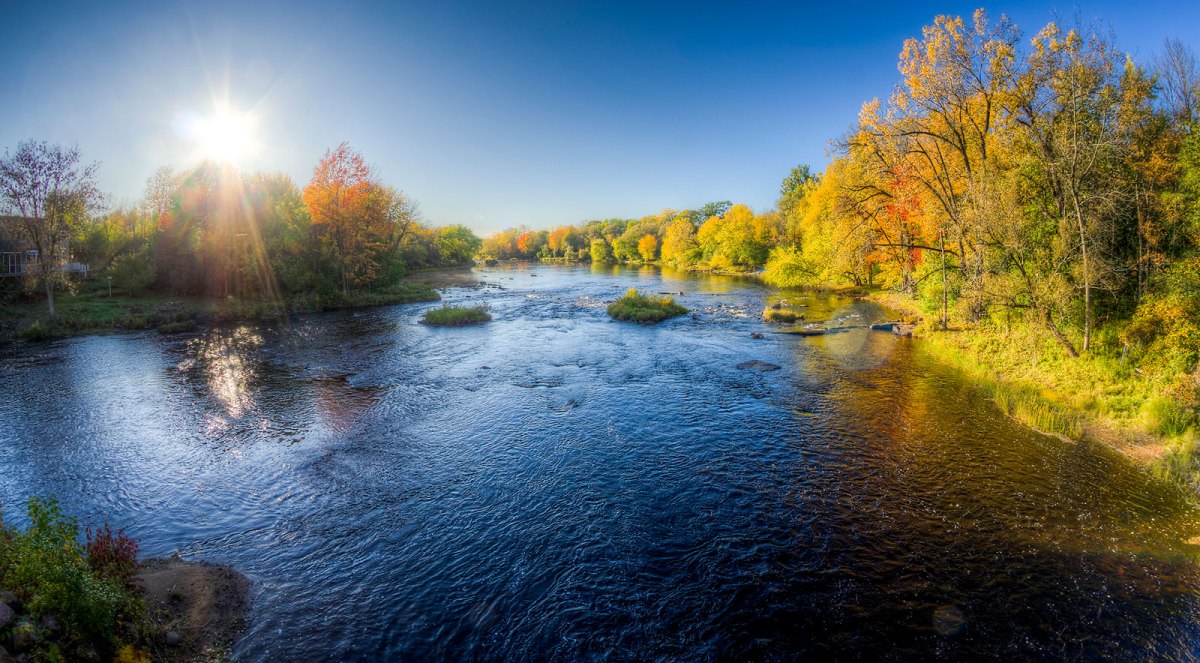
Photo by Decaseconds, courtesy Flickr. CC BY-NC 2.0 Deed.
Talking Wings walked through the rights of nature, which they also consider the “rites” of nature, our responsibilities to the nonhuman world, to our kin, as Robin Wall Kimmerer would say. Braiding Sweetgrass has supplanted Desert Solitaire as the bible of a certain subculture of outdoorsy young people, many of whom signed up for Queer Ecologies. Abbey’s ethic was rooted in allegiance to wilderness and separateness, an earthbound haughtiness delivered with a wink. These days, the wink and the pose, if not the message, have been co-opted by cynics posting reactionary gibes of every sordid variety on social media. Kimmerer’s direct earnestness, her science and spirituality, fills the void. There’s no mistaking her message: we are connected. So, too, with Talking Wings. The students—so often bombarded with bad news or, worse, asked by their teachers to quantify the horrors—respond with enthusiasm, palpable relief, near-awe.
Blake went on to describe the resolution for the Rights of the Raquette River, which Talking Wings proposed and which, astonishingly, the Town Board of Potsdam had recently passed. The State of New York, as a “home rule state” allows municipalities to pass laws that have actual teeth. Now a similar resolution granting rights to the Grasse River in the Village of Canton, where we sat, had been proposed.
“What would the Grasse River say if it could speak?” Blake asked.
The Grasse runs right past campus, wide and rolling, brown with tannin, meandering around rocks. Home to ducks and geese, mink and muskrats, heron and muskie, and a popular place for students to relax or recreate. The students know this river. They tucked into their journals, scribbling steadily, immersed in imagination, in possibility.
“Where do you find hope?” one asked.
Blake replied directly: “I do not. I am a pessimist. Tzintzun is an optimist, but I am a pessimist. This is why I do this work.”
The bluntness struck a chord. Like Blake, like Greta Thunberg, these young people, especially post-Covid, were spurred less by naïve enthusiasm than by informed exasperation and a willingness, near desperation, to try something, anything, new.
Forget science. We all know the science. If things are gonna change, we need another approach.
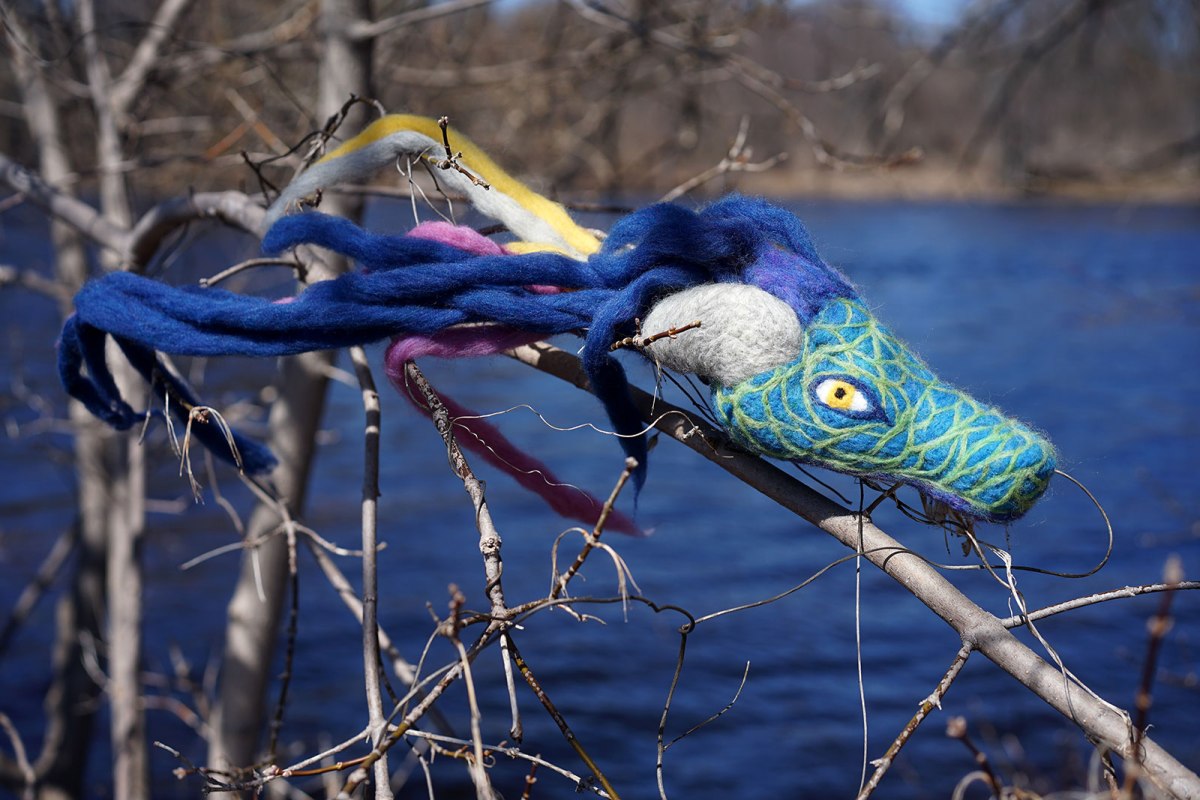
Photo by Blake Lavia.
Serendipity—a Conversation
Talking Wings insist they stumbled into this work. Blake is originally from Italy, Tzintzun, whose family is from the Yucatan peninsula, identifies as mestizo, and their sense of cultural and geographic fluidity is as palpable as their commitment to this one small place.
When Blake arrived in the United States to study art, they felt out of place, completely unnerved—“like extreme culture shock”—and they found solace in the rivers and the mountains, the natural world. On one hike, they reached the top of a small mountain and looked out at the expanse of rivers and lakes, all this water, so radically different from Italy.
“I remember falling asleep on top of the mountain. And when I woke up, everything had changed. I wasn’t a ghost anymore. I wasn’t a phantom.”
Tzintzun came from a family of theater artists and grew up dreaming of being a filmmaker, but over time began to distrust the medium.
“My focus was really analyzing the violence of actually ‘capturing or shooting’ a person or an entity and portraying them on screen. And that itself started to weigh more and more heavily on me, so my art started to shift from filmmaking to more performance or installation.”
The two met and began working together. They moved to Massachusetts, spent some time in Boston, then landed in the western part of the state where they learned the story of how the Swift River, the Quabbin, was dammed in the early 20th century, drowning four towns, causing the removal of 34 cemeteries and 31 miles of railroad, killing at least 26 people.
“We realized the water we’d been drinking in Boston came from there, and we’d been totally and utterly ignorant of its history, of their history. And that was like an awakening call. Like, what is the history of the resources that we use in our daily life? What keeps us alive?”
They created an installation they called “Memory Flow” that showed in Vermont, at Goddard College, and elsewhere, wherein people were invited to walk through a labyrinth of plastic membranes, paper cutouts, and projected textiles. At the center of the exhibit were four containers of water, Quabbin water, in which pictures taken in the displaced towns were submerged.
Blake described the concept they created, and the experience: “Tzintzun was wearing this deer mask and was doing some kind of movement and invited the audience to fish for the pictures out of the water and the idea was like, okay, now you know the history. It’s all around you. What are you going to do?”
Talking Wings’s approach was born, but they hadn’t yet found a place to settle into the work. After a search around the Northeast, they landed back in the North Country. For one thing, the region is much more affordable than many other places—cheaper than Vermont or Western Mass by a longshot—and beautiful besides. Blake never forgot how, when they felt most lost, they felt at home with the rivers.
Around this time, mid-pandemic, they first heard about the rights of nature. They read about the case from Orlando, Florida, where voters passed a law on recognizing the rights of waterways to be free of pollution. Around the same time, they found Christopher Stone’s Earth and Other Ethics: The Case for Moral Pluralism, published in 1988, in a used bookstore. This sparked a new focus.
“We thought: Why don’t we give rights to the rivers?”

Image by Tzintzun Aguilar-Izzo
The Rights (Rites) of Rivers
Water in the North Country is so plenteous that even coming from the famously wet Pacific Northwest, I was wowed. On late summer days, I could swim the Grasse River among white pines and sugar maples, beech and birch and hemlock, the clear blue sky above, a gentle paradise. Adirondack Park to the south, the St. Lawrence to the north, in all the space in between, you find water: running over boulders and alongside farmland, slipping through the small villages where kids play hockey on the frozen river edges, and into the woods where waterfalls freeze to a froth. Friends went on weeklong canoe trips. Not as wild as the whitewater of the West, but more omnipresent. Easy to take for granted.
Talking Wings reached out to the many friends and allies they’d met in the area to broach the idea of river rights. “We said: Let’s talk. But everybody we contacted was like, no, it’s not possible. It’s a conservative area, it’s not going to work.”
They decided to try anyway, to create an event (Tzintzun: “People love events; people love being on camera.”) Not the kind that would feature prominent speakers from among those spearheading the national movement. They’d just start a conversation, find people—anyone—who, like them, had never heard of the concept, but might be open to it. They reached out again, this time even farther. (Tzintzun again: “I’m very much an email addict, a research addict, and when I work, I contact everybody. If someone showed interest, ever, I contacted them.”)
In fall 2020, Talking Wings managed to convene the North Country Art, Land, and Environment Summit with 16 official partners from Northeast Farmers of Color to the Saint Regis Mohawk Tribe. In March 2022, they organized the North Country Rights of Nature symposium, with youth as moderators. They assembled a working group who created a Bill of Rights & Responsibilities for the St. Lawrence/Kaniatarowanénhne Watershed—in short, that rivers and their watersheds have the inalienable rights “to exist, regenerate, flourish, evolve, adapt, and thrive.” They drafted blueprints for local ordinances, “homegrown laws.”
Some Rights of Nature laws are intended to prevent a specific threat: the Disney development at Mineral King, fracking in Pittsburgh, an oil pipeline in Minnesota. The threats in the North Country haven’t yet materialized, but they can’t be far off. This is the kind of under-the-radar place climate refugees are looking for: not susceptible to wildfires or hurricanes or severe drought, rich in fertile land and cheap real estate. Their project is preemptive in a sense and rooted less in strategy than ethics. A new way of thinking. A new way of behaving.

Image by Tzintzun Aguilar-Izzo.
Earth Day II
On Earth Day, Talking Wings shared the podium with allies including Abraham Francis, indigenous scholar and former environmental services manager for the Mohawk Council of Akwesasne, the owner of a family-run power plant on the Raquette River, Cathy Shrady, geologist and educator and a member of the Town of Canton Sustainability Committee, and Lee Willbanks, an attorney and river advocate and 40-year resident of the North Country. Each spoke for ten minutes, then Willbanks, a once-skeptic himself, fielded questions from the skeptics.
Would just anyone be allowed to sue on behalf of the rivers? Yes. Any group, like the Sierra Club in the 1972 case, could apply to serve as court-appointed “guardians” of a forest or a river they see as endangered and they could, then, sue on its behalf.
And who would fund this? Good question.
The warm day was waning, and the symposium had already gone over time. People began to sneak away, back out into the sun. One of the skeptics stood to address Talking Wings directly.
“When you first came here, I didn’t expect much,” he said. “But you’ve stayed with it. You work hard.”
“Thank you,” Tzintzun said, with an accommodating smile. Blake remained steady and intent.
“But this,” the skeptic waved one hand in a dismissive gesture, “is completely unrealistic.”
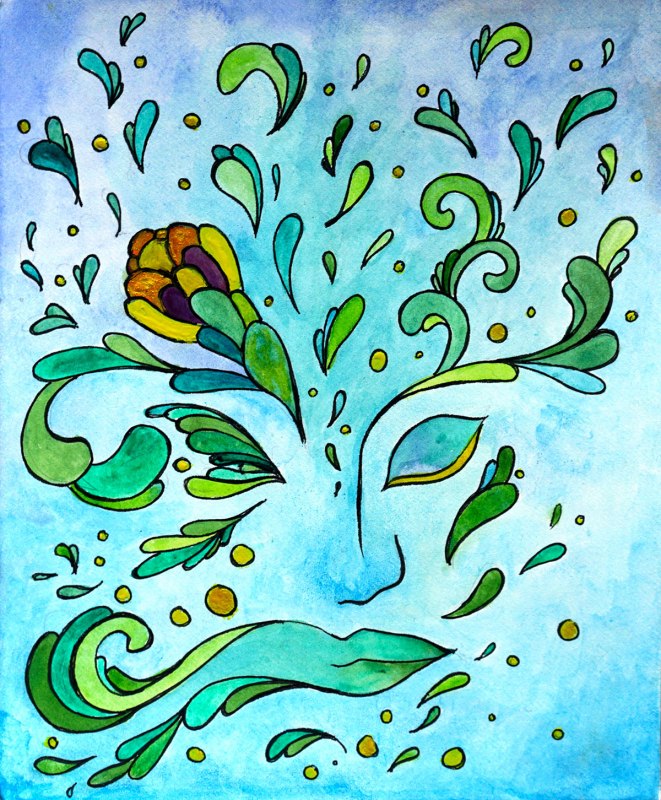
Image by Tzintzun Aguilar-Izzo
Never Give Up
Years ago, I met Congressman John Lewis, the fearless crusader for civil rights who spoke at the March on Washington and led the Blood Sunday march for voting rights in Selma, Alabama. As a young activist, he survived countless beatings and arrests. In Congress, for 33 years, he was a stalwart supporter of affordable healthcare, immigration reform, LGBTQ rights, justice writ large. In his last months, he organized a sit-in on the House floor, protesting gun violence, calling for action, for actual votes on actual legislation. By the time he died, John Lewis was a near- saint. While he lived, he was a storyteller. The day I heard him, in a Baptist church in Tallahassee in 2006, I recorded his words on a tiny cassette recorder. His speech was heartfelt, riveting, inspiring. “Never give up,” he said. “Never give in. Keep fighting.” Later, I’d hear him speak on television or the radio. He told the same story over and over, with the same words, the same lilting tone, the same earnest demeanor: Never give up. Never give in. Keep fighting.
It’s high praise but hardly a stretch to say Talking Wings remind me of John Lewis. What makes them feel authentic, worth listening to, is the fact that beneath the whimsy is dead-serious urgency, a broad perspective, and a kind of ferocity cloaked in stories.
“Injustice,” Tzintzun told me, “deep, deep colonial violence, is rooted into the system. So acting as a community against these systems or to protect our relatives, the beings that live alongside us, is really an act that goes beyond even just writing a resolution or writing a law.” He paused, then continued: “But lawmaking is just another form of storytelling.”
John Lewis shared Martin Luther King, Jr.’s belief in “beloved community,” wherein all people share the wealth of the earth. Talking Wings expands the notion to include more-than-humans. They are the living embodiment of “yes, and…” Their approach is river-like: charging forward, meandering as necessary, nurturing, running into obstacles, shifting direction, steady and unpredictable at once.
So, too, with Queer Ecologies. The semester was a wild ride, the course was the hardest I’d ever taught and the most rewarding. The students grappled with notions of nature and the nature of learning. Many had never read fiction for college class, they claimed, never written poetry. Most had never heard of queer behavior in nonhumans: homosexual, asexual, intersex, and polyamorous animals. We read Eli Clare, Gretchen Legler, Ocean Vuong, Madeline ffitch. They made AI-generated collages and paper mâché fish in drag. They explored real pain—depression, anxiety, coming out, climate change and extinction, where to belong, how to belong, how to be. And they brought their ideals into the larger communities with a collaborative project. Some organized a Pride prom clothes drive with local high schoolers; others led a snowshoe hike with the newly formed Pride group.
And some chose to work with Talking Wings. They went to the local alternative school to teach kids about Rights of Nature, to urge them to write letters in support of the river. They came back radiant, invigorated, full of life. Yes, and… They got A’s.
There was a time when I would’ve scoffed at all of this. My instincts lean pragmatic, my sense of self is strictly straightlaced. No tattoos, no astrology, no third-party candidates. No pie-in-the-sky. And to be honest, there was a time not long ago when I would’ve scoffed at the rights of nature, too, just as my rural neighbors would. My property, like theirs, has been threatened by floods. Would a river with rights be allowed to carve away, willy nilly, at my land? Probably. Okay. Yes, and…
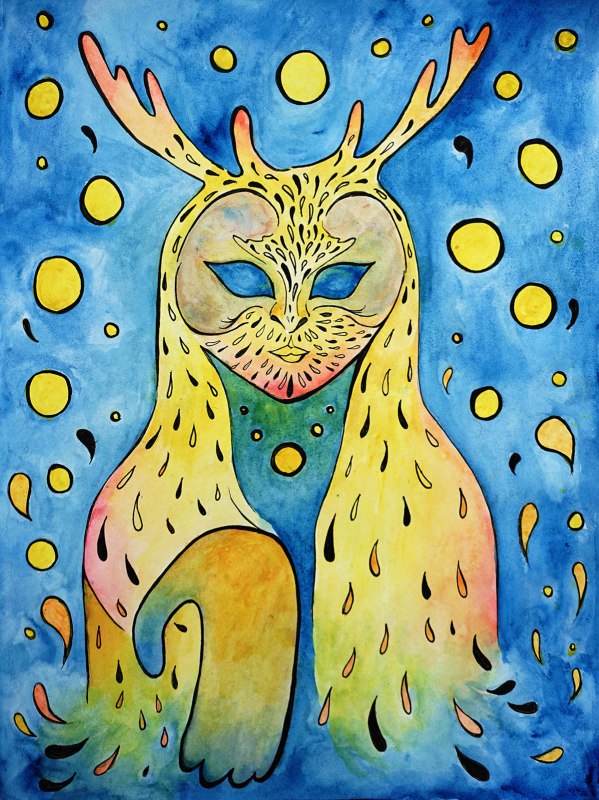
Image by Tzintzun Aguilar-Izzo.
I’d spent years as a landowner, a writer, a teacher, a citizen tiptoeing a middle road, and I can’t say it did much good. When I say this generation of students is fed up with the status quo, when I say “they” have become near-desperate, I mean “me.” I mean “we.” If trying something, anything, new means embracing what’s unrealistic, what’s downright silly, so be it.
When Christopher Stone died in 2021, his obituary called his initial Rights of Nature argument in the Mineral King case “whimsical,” but went on to describe how, over time, it’d come into broad acceptance.
Mineral King is, by chance, where I took my first backpacking trip as a teenager in the mid-1980s. To say I was changed by the experience would be an understatement. I was gobsmacked by the beauty and wildness, yes, but mostly I felt deep connectedness. I was queer and did not know it. I was grief-struck and couldn’t say so, but as we hiked over snowmelt creeks past ancient bristlecone pines, and through vanilla-scented forests to high alpine lakes, I felt a kind of settledness I can only call belonging. I’d grown up 60 miles east of Los Angeles and as we descended to the trailhead after a week in the high country, we could see a stark brown line, thick smog stretched over every place I’d ever been.
When I wrote my own letter in support of the Grasse River, this is what I said: I’ve seen what’s nurtured and what’s not. I know what’s at stake. We all do.
When I told Blake the progress they’ve made, in such a short time, seemed astonishing, they interjected: “If you only tell the story of the projects that we’ve done, I think it sounds amazing. Living it was really rough.”
They meant the skeptics, yes, the struggle, and the impossibility of making a living this way, and they also meant more: “There is a world that wants you to be a certain way, a world that wants you to write emails, to organize things, to be available, to talk to people in a certain way. And then there’s me that doesn’t want to do any of it. And I want to do my art. And I will be there because I am there for the rivers. I am there to speak for the rivers.”
On Earth Day they stood for another 45 minutes, after nearly everyone had left, talking to the stragglers, the naysayers, to anyone who wanted to talk. By the time they finally left the auditorium, the sun had dropped behind the pines and the air had turned cold. The rivers, all around us, just kept running.
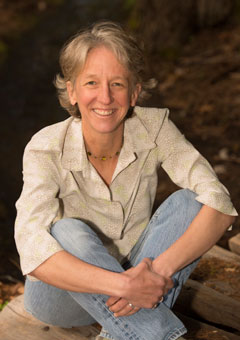 Ana Maria Spagna is the author, most recently, of Pushed: Miners, a Merchant and (Maybe) a Massacre and the poetry chapbook Mile Marker Six. Her previous books on nature, work, community, and civil rights include Uplake: Restless Essays of Coming and Going, Potluck: Community on the Edge of Wilderness, Reclaimers, and Test Ride on the Sunnyland Bus: A Daughter’s Civil Rights Journey. After working 15 years on backcountry trail crews for the National Park Service, she turned to teaching and has taught at Whitman College, Antioch University, St. Lawrence University, and currently in the MFA program in Nature Writing at Western Colorado University and at Wenatchee Valley College. She lives in Stehekin, Washington with her wife, Laurie.
Ana Maria Spagna is the author, most recently, of Pushed: Miners, a Merchant and (Maybe) a Massacre and the poetry chapbook Mile Marker Six. Her previous books on nature, work, community, and civil rights include Uplake: Restless Essays of Coming and Going, Potluck: Community on the Edge of Wilderness, Reclaimers, and Test Ride on the Sunnyland Bus: A Daughter’s Civil Rights Journey. After working 15 years on backcountry trail crews for the National Park Service, she turned to teaching and has taught at Whitman College, Antioch University, St. Lawrence University, and currently in the MFA program in Nature Writing at Western Colorado University and at Wenatchee Valley College. She lives in Stehekin, Washington with her wife, Laurie.Read Ana Maria Spagna’s essays “The Lawns, So Well-Tended” and “Winter Flood” appearing in Terrain.org.
Header image, from The Eyes of Water, by Blake Lavia.
- SEO Powered Content & PR Distribution. Get Amplified Today.
- PlatoData.Network Vertical Generative Ai. Empower Yourself. Access Here.
- PlatoAiStream. Web3 Intelligence. Knowledge Amplified. Access Here.
- PlatoESG. Carbon, CleanTech, Energy, Environment, Solar, Waste Management. Access Here.
- PlatoHealth. Biotech and Clinical Trials Intelligence. Access Here.
- Source: https://www.terrain.org/2024/nonfiction/yes-and/

